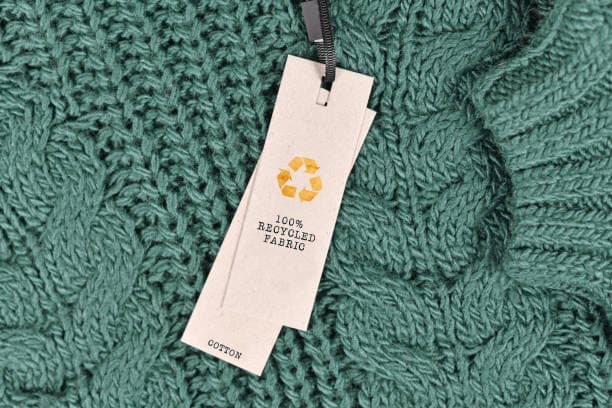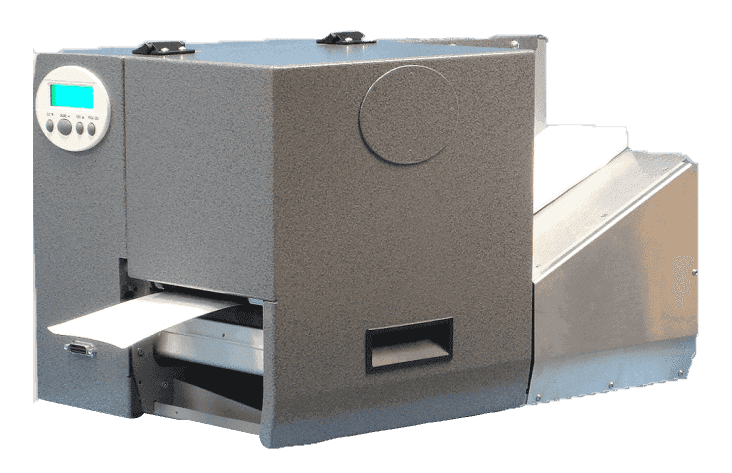Swing tags have a long and illustrious history, and are now common in a vast variety of applications. One of the most popular uses of these tags is in the clothing industry, where they can be used to label clothes without damaging them.
Different clothing manufacturers have different requirements for swing tags. Small, artisan producers normally favor designs with unique fonts, graphics, or other design features, which allows them to bring out the character of their brand. For larger manufacturers, who are often producing thousands of swing tags a year, cost and speed of production are typically larger concerns.
This does not mean that you have to compromise on the look of your swing tags in order to produce a large quantity of them. With modern printing techniques and printing machines, making swing tags can be done incredibly quickly, even if they include personalized information and complex designs.
If you need to produce a large number of swing tags for clothing, you essentially have two options. You can either outsource your printing to a specialist outfit, or you can do it in house. For small businesses lacking a lot of investment capital, it is often better to outsource, as a good printing company will be able to give you advice, and a good price, for most orders.

Why You Should Buy Your Own Apparel Printer#
However, if you are producing a lot of swing tag for clothing, we highly recommend investing in a machine to print them like DoraniX’s ThermaPrint 64. Doing your printing in-house has several advantages, not least that if you are producing a large number of swing tags, the machine will quickly pay for itself.
In addition, having your own machine for swing tag printing in-house means you are not reliant on outside contractors for your workflow – there is nothing worse than your printer delivering your stickers late, and messing up your entire order.
Advantages of In-House Printers#
Having a swing tag printer in house also has advantages in improving the types of tags you can produce. This is because, after only a few weeks spent working with your new printer, you will understand what it can do and what it cannot. Most modern industrial printers come with a vast range of design, color, and font options, and being able to see these will allow you to design better stickers.
If you are producing stickers for a client, they will really value your knowledge and flexibility when it comes to producing branded tags.
And last but definitely not least, doing your own swing tag printing improves cost efficiency. This is not only because you are not paying for external printers’ profit margins, as we already mentioned, but because transportation costs are greatly reduced – you do not need to ship huge number of stickers around the country if they are being printed in your own office or workshop.
Materials#
One of the first things to consider when buying a printer for swing tags for clothing is the material you want to be able to print on. Nowadays, swing tags are made from a vast variety of different materials, from the thinnest paper right up to rigid plastic tags.
One of the most popular materials at the moment, though, is cardboard. Whilst, for specialist applications, having a waterproof plastic label printed on plastic or Tyvek can be an advantage, for clothing a cardboard label offers a good compromise between ruggedness and cost efficiency.
Printing on different materials also requires different printing techniques. Paper and cardboard, as porous materials, are the easiest to print, because they quickly absorb any ink applied to them. This reduces smudging, and also leads to reduced drying times – a major consideration if you are producing a vast number of swing tags, and want to be able to do this quickly.
Tyvek and other forms of synthetic materials are generally non-adsorbent, and as a result present some particular difficulties with printing. Ink tends to stay on the surface of these materials, and as a result can dry quite slowly. In response to this, many industrial printers now use thermal techniques which significantly reduce drying times, greatly speeding your printing process.
Luckily, most good printers now offer the capability to print on a variety of substrates, from paper right through to rigid plastic. So even if you buy a printer to produce cardboard swing tags, it is nice to know that if you swap to plastic in the future, your printer will be able to handle this.
What to Look For in a Swing Tag Printer for Clothing#
Choosing a swing tag printer for clothing depends on your own requirements, and the types of orders that you are processing. However, no matter the type of printing you are doing, some things should always be taken into account when choosing a swing tag printer:
Things to Consider Before Buying a Swing Tag or Apparel Printer#
- Speed
- Print Quality
- Automated Sorter
- Adaptability
- Durability
One of the most important considerations is speed. Print orders for swing tags are often of very high volume, and so a printing speed of at least 5 inches/second is a must. In addition, some printers now have a slew capability, allowing them to quickly skip over non-printed sections of the substrate, greatly improving overall speed.
Print quality should also be a major consideration. Often, swing tags require that very small writing be reproduced precisely. Nowadays, the best thermal transfer printers are able to print at up to 300 DPI, which is more than sufficient for these purposes.
If you are dealing with extremely large orders, an automated and motorized sorting module is also extremely useful. In many cases, an order for swing tags will contain several varying types or sizes of package, and a motorized sorter means that each type will be automatically stacked in the correct pile.
Another consideration should be the adaptability of the printer. A good swing tag printer will be able to deal with a wide range of thicknesses, offer several different fonts, and even cut packaging into a variety of formats and shapes.
The cost of consumables should also be considered. Whilst most printers use thermal printing techniques, some now come with advanced features that significantly improve efficiency, meaning that consumables will last longer.
Last but not least, of course, the ruggedness of the printer should be assessed. Swing tag printers, like a lot of industrial printers, often need to work reliably in quite difficult environments, and the printer should be able to deal with heat, dust, and other complications.
To find out more about our printers please contact us for more information.



